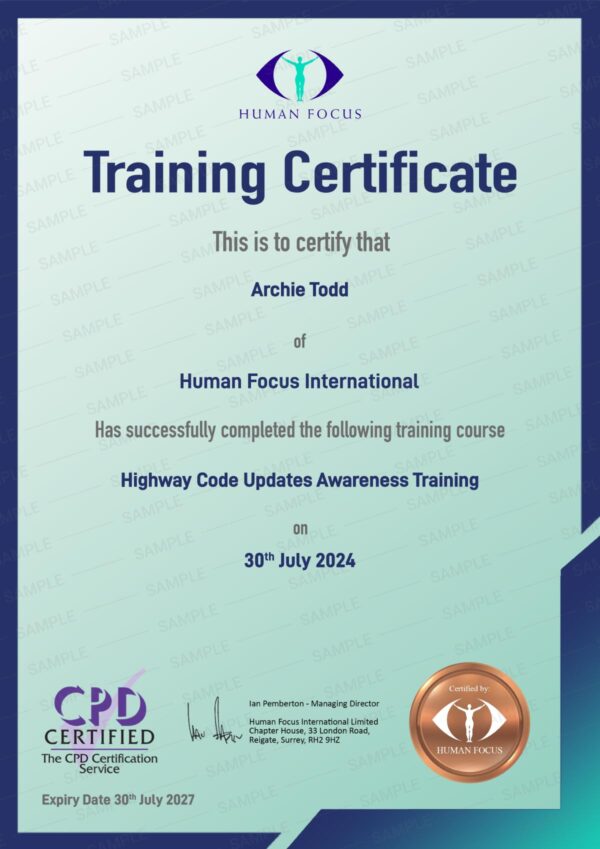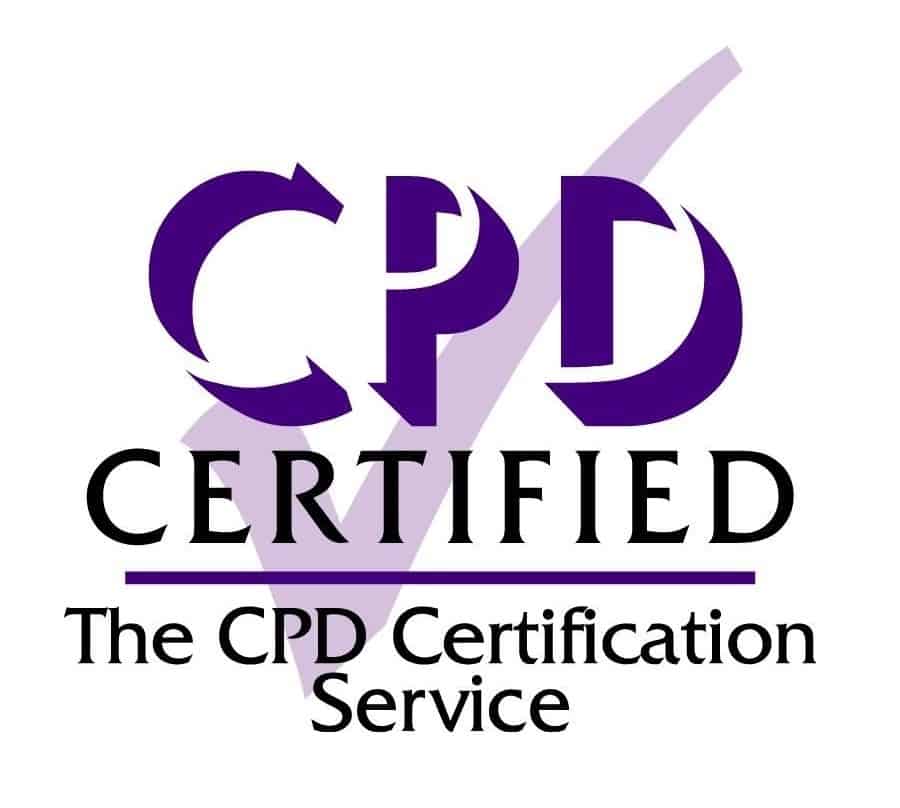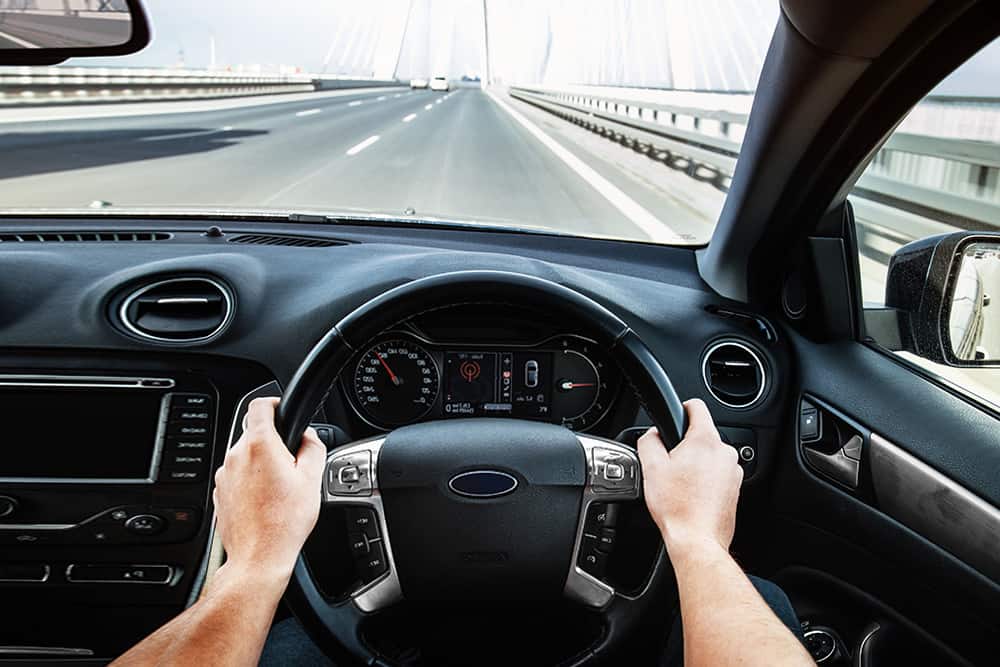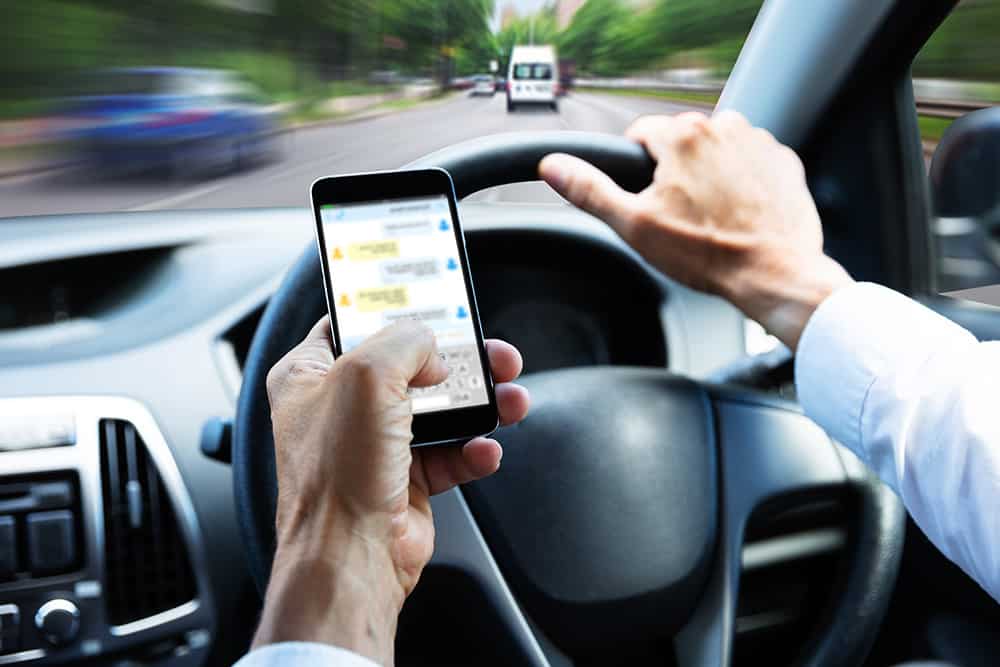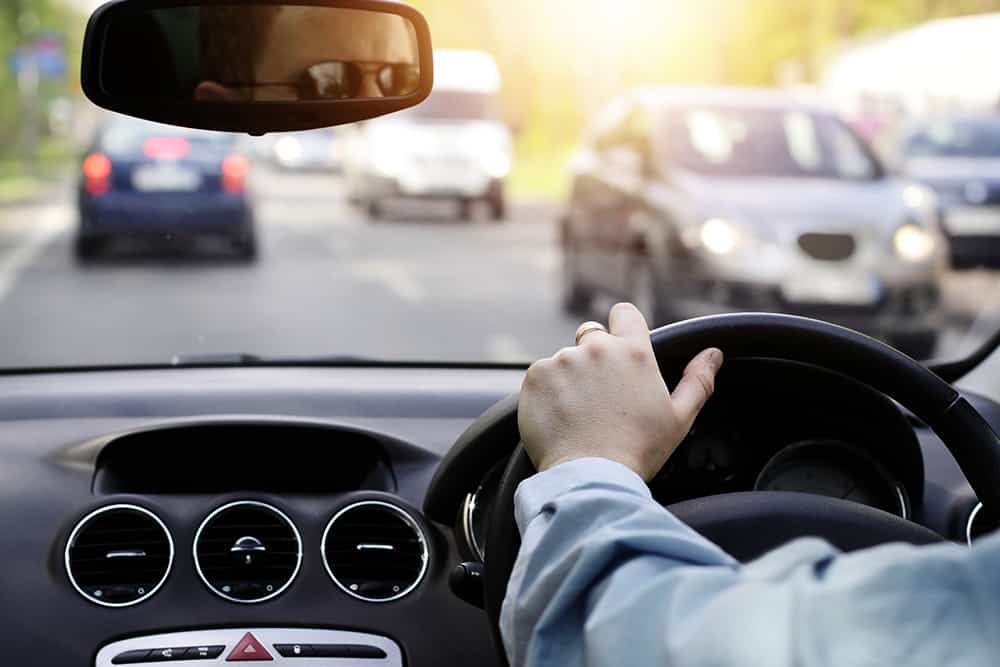The course informs drivers on the changes to driving legislation introduced in 2022 by the Drivers and Vehicle Standards Agency (DVSA). These include changes related to the hierarchy of road users, mobile phone use, operating vehicles around cyclists and parking. Whilst many of these changes should be habits that good drivers already have, it is vital that all occupational drivers are reminded of what these habits are and are on the same page when it comes to safety and the law.
Highway Code Changes 2022 Training
Course Duration: 15+ minutes
Course Preview
Course Details
| Course Duration | 15+ minutes |
|---|---|
| Approval body | CPD |
| Format | Fully online |
| Assessment | Multiple choice |
| Certification | Same-day digital certificate |
| Certificate Valid For | 3 years |
Suitable For
Course Content
This course contains the following sections:
- The Hierarchy of Road Users
- Enhanced Priorities for Pedestrians
- Cyclists
- Parking
- Mobile Phone Use
What You Will Learn
Available in 13 Languages
Course Approval Body
The course certificate includes:
- User name
- Company name
- Course name
- Completion date
- Expiry date
- Approval body
A CPD-certified certificate will be available for download and printing instantly upon course completion.
Users must complete an assessment before earning their certificate.
The end-of-course test is:
- Fully online
- Multiple choice
A score of 80% is required to pass.
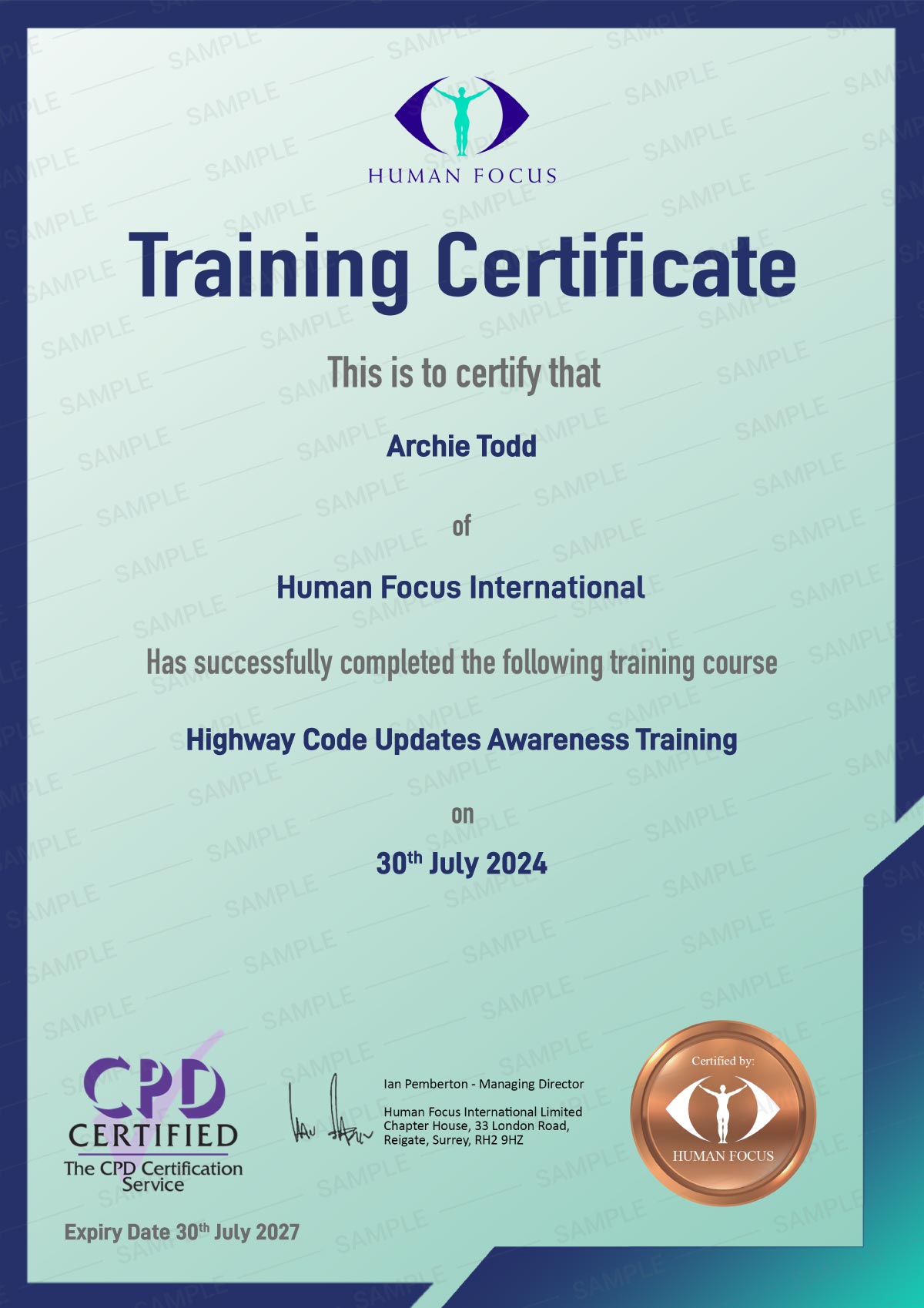
Customer Feedback
Why Is Highway Code Updates Awareness Training Important?
Work-related road accidents are the primary cause of preventable deaths and injuries. It is estimated that a third of all road accidents involve a person who is at work at the time. This accounts for over 20 fatalities and around 200 serious injuries every week as per the Health and Safety Executive.
Employers have a clear responsibility under the Health and Safety at Work Act and the Management of Health and Safety at Work Regulations. Managing occupational road risks compliant to these regulations is a part of their broader management duties.
About Highway Code Updates Awareness Training
The highway code changes introduced in 2022 are designed to make the road safer for everyone. They outline a clear road hierarchy, introduce changes to how drivers should respond to pedestrians and cyclists, and increase restrictions on mobile phone use. Having a clear understanding of these driving techniques will help drivers to drive safely and legally.

